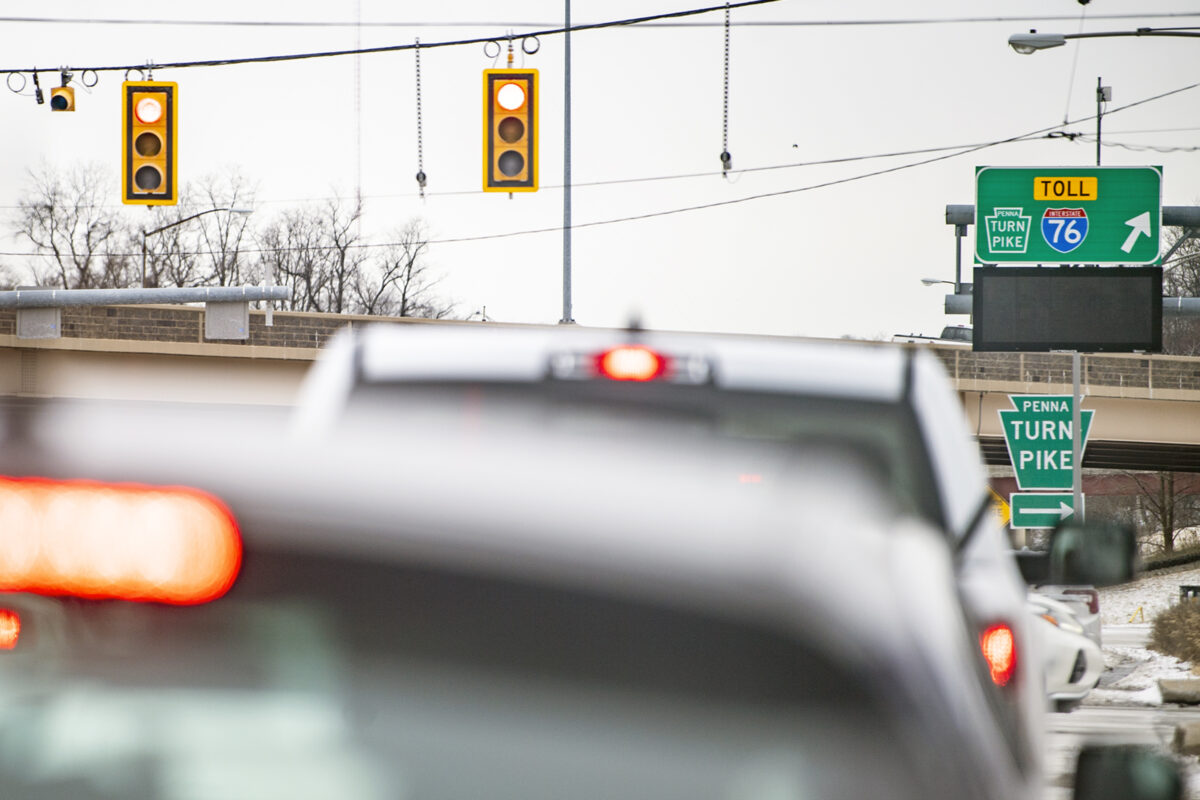Commercial traffic on the Pennsylvania Turnpike is above pre-pandemic levels, passenger traffic has rebounded substantially, and the agency no longer has to make a $400 million annual contribution to the Pennsylvania Department of Transportation to pay for public transit.
Still, for the 15th year in a row, the agency will raise tolls Jan. 1, this time by 5%. CEO Mark Compton said the increase is needed — and toll hikes could continue through 2050 — because the agency remains saddled with debt from the PennDOT payments.
With the toll increase, the cost for a cross-state trip from Ohio to New Jersey in a passenger car will increase from $49.50 to $52.10 for motorists who use the pre-paid E-ZPass transponder. For those who use Toll By Plate, where there is a 45% surcharge to cover processing fees for taking a photo and mailing the motorist a bill, the cost will rise from $100.20 to $104.50.
The most common toll for a Class-5 tractor-trailer will increase from $13.70 to $14.40 with E-ZPass and from $28 to $29.40 for Toll By Plate.
Compton said commercial traffic on the turnpike is averaging about 10% above its highest level before the pandemic started. Passenger traffic remains about 10% below, but both are still growing.
“We’ve been really encouraged by how resilient the traffic has been,” Compton said.
The reason that doesn’t translate into lower toll increases on the highway is directly tied to the agency’s debt from borrowing to pay PennDOT. In 2007, Gov. Ed Rendell proposed charging tolls on Interstate 80 to help pay for improvements on other state roads and called on the turnpike to collect the money. The Legislature passed a bill requiring the turnpike to pay PennDOT $900 million annually from those tolls.
However, federal officials turned down the idea of tolling I-80. But instead of eliminating the payments to PennDOT, the state reduced them to $450 million annually through 2022, when they dropped to $50 million.
“The governor’s office and the General Assembly agreeing to follow the law [by not continuing the higher payments to PennDOT] is really a big deal,” Compton said. “The good thing is you’re not feeding into that trough any more.”
A lot of the burden from 15 years of payments remains in place. When the PennDOT payments were established, the state put together an escalated debt service plan based on anticipated borrowing, and the cost of repaying that debt will grow from $800 million this year to $1.2 billion at its peak in 2037. Annual revenue this year was about $1.5 billion, so more than half of the agency’s revenue is spent on debt service.
As a result, the turnpike is projecting annual rate increases of 5% through 2025, 4% in 2026, 3.5% in 2027 and 3% through 2050.
Unfortunately, the increases in traffic projected when the Legislature set up the PennDOT payments — with the exception of the drop during the pandemic — were factored into those future toll increases, Compton said. “They forecasted what we are seeing today, and, candidly, it has followed through almost exactly,” he said.
On the administrative side, Compton maintains the agency has done a solid job of reducing staff and holding budget increases to an average of 0.8% a year since 2008, including keeping those costs flat since 2016. A big part of that in recent years was switching to a cashless system at the start of the pandemic, eliminating about 500 people who had been involved in toll collection and doing so 16 months earlier than expected.
The agency also has resumed its normal level of capital spending, which had been reduced when toll collections plummeted during the pandemic. That means it is continuing its program to widen the highway to three lanes in each direction across the state and is beginning the process of installing on-road gantries to record toll payments in the eastern part of the state, which is expected to improve traffic flow by eliminating toll plazas.
Eventually, those plazas will be removed and entrance and exit ramps redesigned to allow free-flowing traffic.
One continuing problem is what the industry calls “leakage,” the amount of money the agency loses because some motorists refuse to pay their bills, mostly Toll By Plate customers. That number stood at $155 million in July.
Compton said the agency hopes to begin making more progress in collecting those outstanding tolls this year for two reasons.
First, the Legislature approved a bill that allows the agency to ask PennDOT to suspend vehicle registrations for owners who accumulate $250 of unpaid tolls over five years instead of $500 over three years. Additionally, because others are seeing similar losses, the state is closer than ever to reaching reciprocal agreements with Ohio, New Jersey and Maryland to use the same penalties for going after those who don’t pay.
Compton said about 50% of the scofflaws are from other states, and a high percentage of those are from those neighboring states.
“If we can nail down those three states, that would be a big help. We’re optimistic it can happen in 2023.”
Ed covers transportation at the Pittsburgh Post-Gazette, but he's currently on strike. Email him at eblazina@unionprogress.com.



